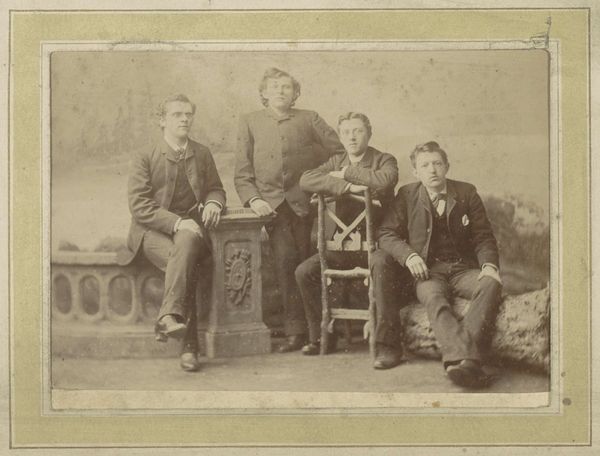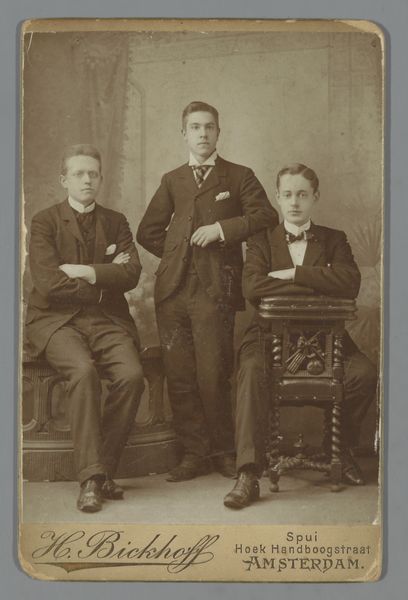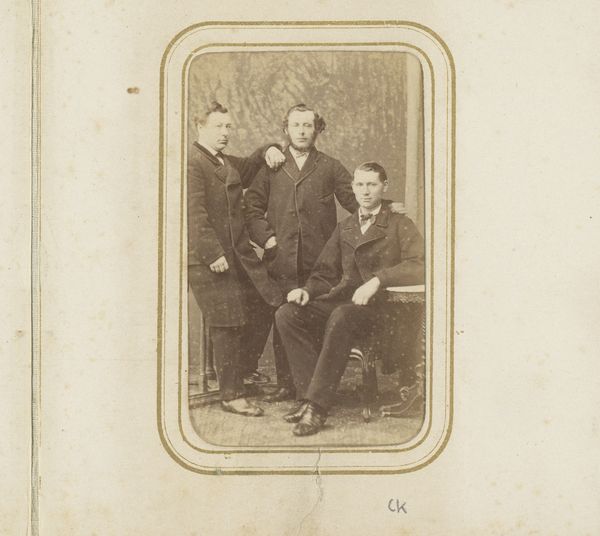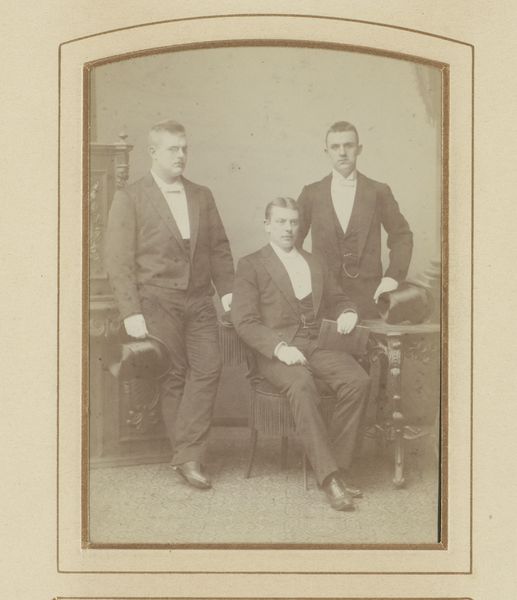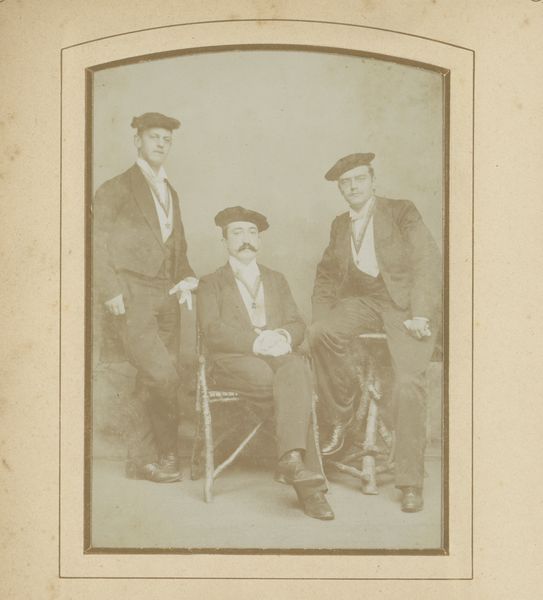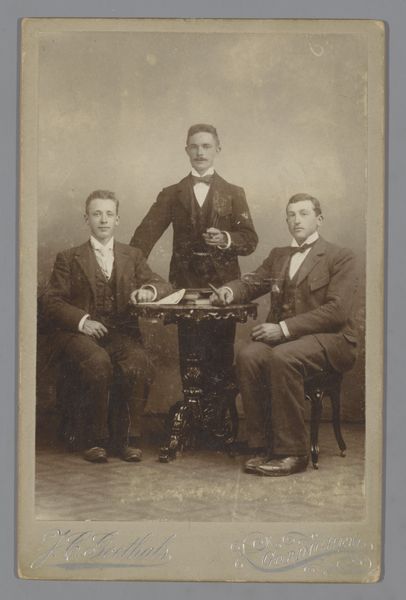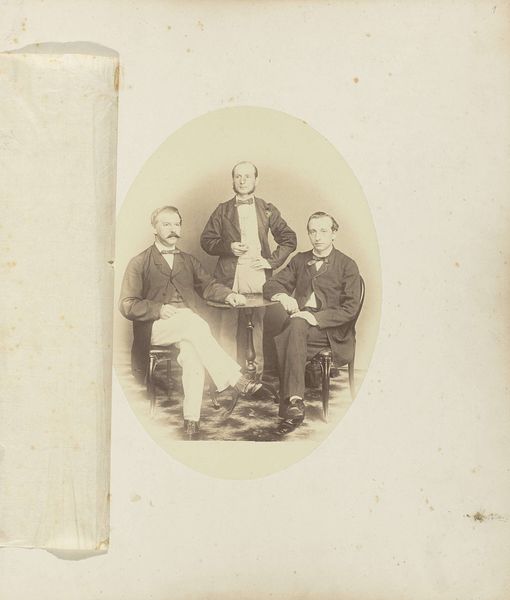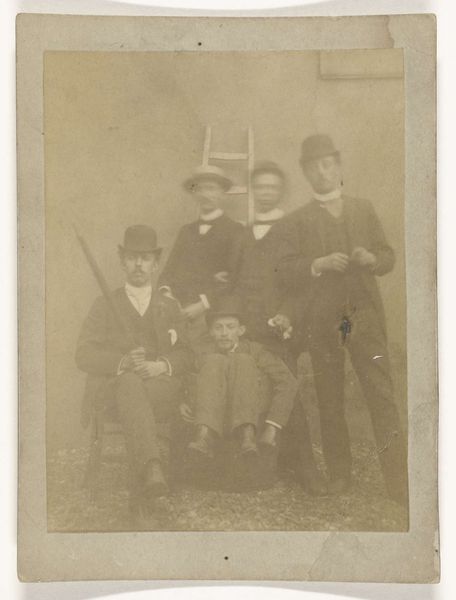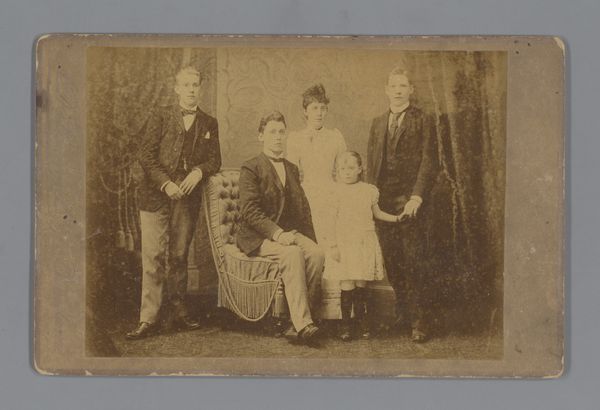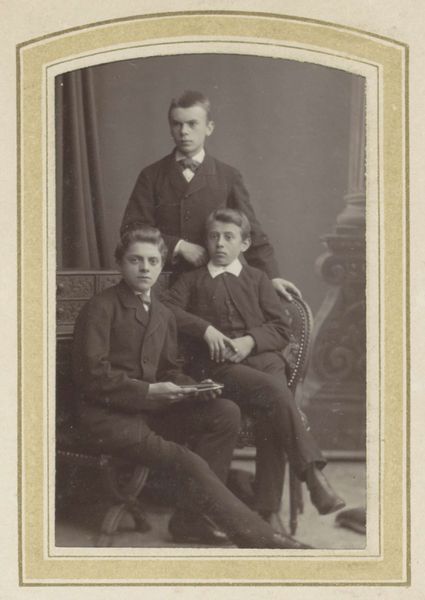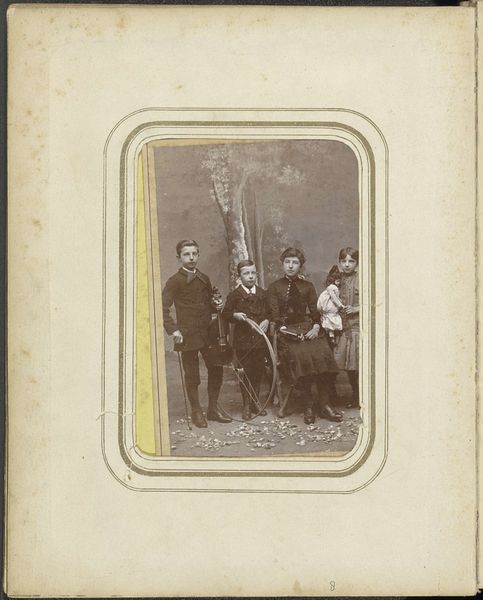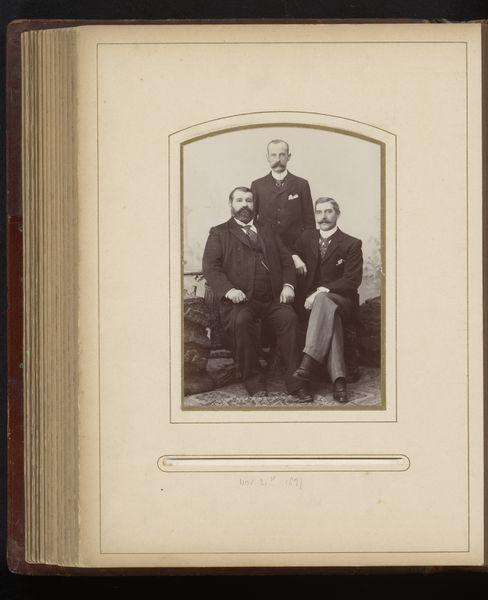
daguerreotype, photography
#
portrait
#
studio photography
#
antique finish
#
16_19th-century
#
daguerreotype
#
photography
#
19th century
#
genre-painting
Dimensions: height 101 mm, width 62 mm
Copyright: Rijks Museum: Open Domain
Editor: Here we have a "Portrait of Four Unknown Men" from between 1855 and 1885, made using the daguerreotype photographic process by N. de Hen. It has such a formal, almost staged quality, wouldn't you say? I'm curious, what does this portrait reveal about the time period in which it was made? Curator: It's a fascinating window into the rise of studio photography and its impact on societal representation. Think about it – prior to photography, portraits were largely the domain of the wealthy, commissioned in painted form. Photography, especially in the carte-de-visite format, made portraiture far more accessible. Who could now participate in portraiture, and how might this have affected the kinds of imagery that circulated in the public sphere? Editor: So it democratized image-making. You went from having paintings predominantly represent elites to photographic prints where pretty much anyone can participate? Curator: Exactly! This portrait, then, is part of that explosion of photographic imagery. Notice the backdrop: a painted landscape. This hints at the artifice involved in even this "realistic" medium. It tells us photography wasn't just about documenting reality, but about constructing it too. Were there established conventions, or socio-economic patterns related to who chose what kind of background, I wonder? Editor: It's amazing how one image opens up so many different avenues of inquiry. Curator: Precisely. It shows how something like portraiture became a means of shaping individual and collective identities within rapidly changing social landscapes. Photography quickly gained a public function beyond the immediate desire for preservation. Editor: Thanks for sharing your insights! It certainly offers a lot to think about regarding art, image production, and how historical and socio-political dynamics come to shape and even constrain them.
Comments
No comments
Be the first to comment and join the conversation on the ultimate creative platform.
